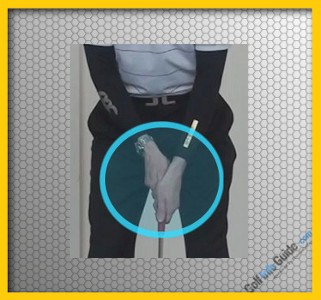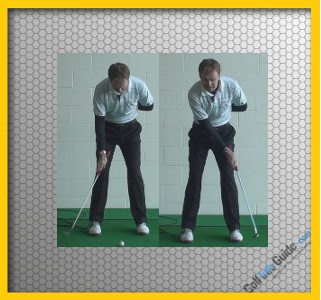Cross Handed putting was first used as a band aid when top performing players had putting woes. Cross Handed or Left Hand Low technique (Right Hand Low for left handed golfers) is now being recommended to junior golfers when they start playing the game.
Two Time Major Winner Jordan Spieth began playing with the Cross Handed technique and is now one of the most proficient putters in golf. Bernhard Langer struggled with his putting so much in the early 90’s that he went Cross Handed and it kept his game relevant before switching to a long putter later in his career. As Vijay Singh overtook Tiger Woods as World #1 in the mid 2000’s, his reputation as a putter was mediocre at best. He worked harder on his game than anyone else, but it was switching to a combination of Cross Handed and a belly putter that truly made him a force at every event. Justin Thomas, Sergio Garcia and Rickie Fowler have all seen success in recent years while putting cross handed.
The main reason many golfers switch or ponder switching to Cross Handed is for a couple reasons. First, they tend to have too much right hand influence (left hand for left handed golfers) in the putting stroke causing inconsistent distance control. Second, their left wrist (right wrist for left handed golfers) breaks down at impact causing the putter face to close and miss short putts regularly. Another reason an individual may switch is because they have open shoulders at address and this causes a slight out to in path. Evidently, this gets worse under pressure. The Cross Handed technique naturally squares up the shoulders and keeps the putter moving straight down the target line.
The following tips will help you become a better putter while utilizing the Cross Handed Putting Style.

Gripping it Cross Handed is quite simple. For a regulation putter with a regulation size grip, you would have your right hand on the very top of the club (left hand for left handed golfers). You would then place your left hand below leaving no space between the left pinky and right forefinger. In some cases, players prefer to overlap the right forefinger over the left fingers. When it comes to taking your grip, it’s all about comfort. It is recommended to do some trial and error and find the most comfortable way to have your hands and fingers on the club. If you still feel that your right hand (left hand for left handed golfers) is still too dominant, try double overlapping with your forefinger and middle finger. This will be an eight finger grip that leaves your lead hand in control. Basically, when it comes to putting, there’s no wrong way or right way to grip it as long as the ball keeps going in the hole and you’re comfortable doing it.

One of the major benefits to the Cross Handed grip is that it naturally drops your left shoulder (right shoulder for left handed golfers) creating a very square shoulder alignment. Since this occurs it’s very important to have all your lines parallel to one another. Therefore, your shoulders, hips, knees and feet should all be parallel to the target line. When putting Cross Handed, alignment becomes very important because you create a straight back and straight through putting stroke. This keeps your putter face square to the target line longer meaning there’s very little room for error when it comes to aim.

Tip #3 Back of the Hand Down the Target Line
Many golfers have a common flaw in their putting strokes where the left wrist breaks down (right wrist for left handed golfers). When putting Cross Handed this flaw will be decreased dramatically. If a player switches to Cross Hand, it’s important to have the back of the low hand move down the target line after impact. To practice this, find a six foot putt that’s relatively straight and drop an alignment stick down just above your putter. Make sure the putter head keeps moving down the line through impact. A major thing to keep an eye on is to make sure the toe of the putter never gets ahead of the heel. This means the putter has remained square through impact.

Like anything new, when you switch to Cross Handed it will feel awkward. One way to relieve this discomfort is to practice with just your left hand on the club (right hand for left handed golfers). Take ten minutes and practice putting from varying distances. Start at three feet and move back in three foot increments taking two minutes at each level. Once ten minutes is up, repeat with both hands on the club. Once twenty minutes is complete, you should begin to feel more comfortable while putting Cross Handed.






